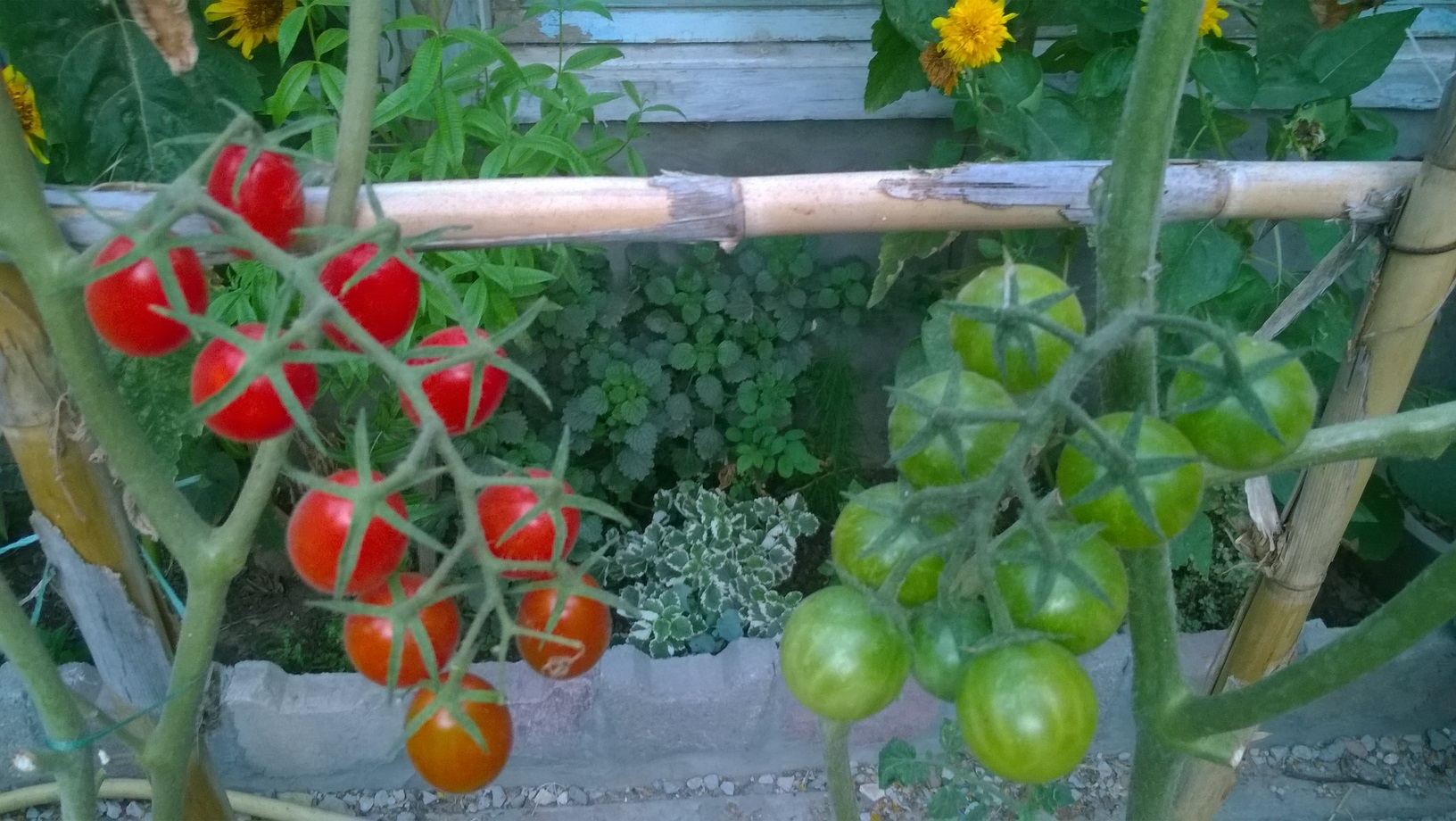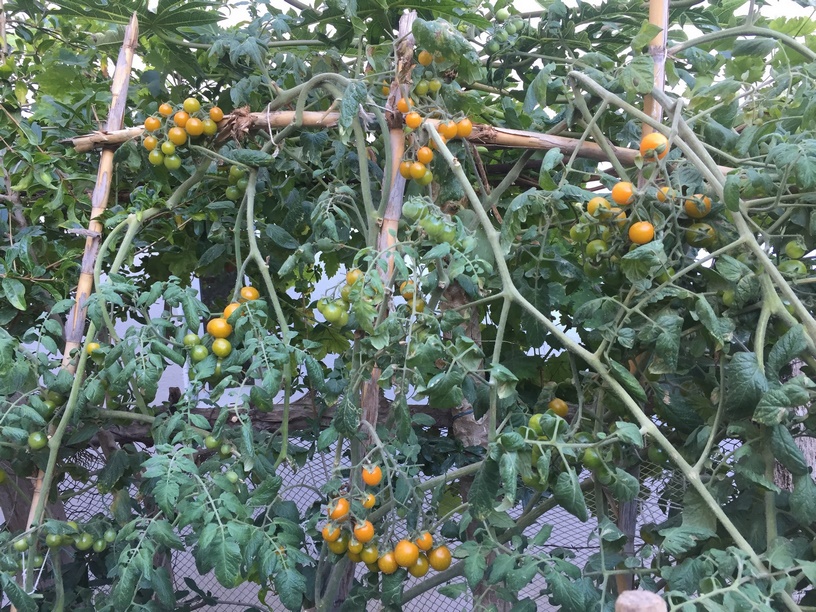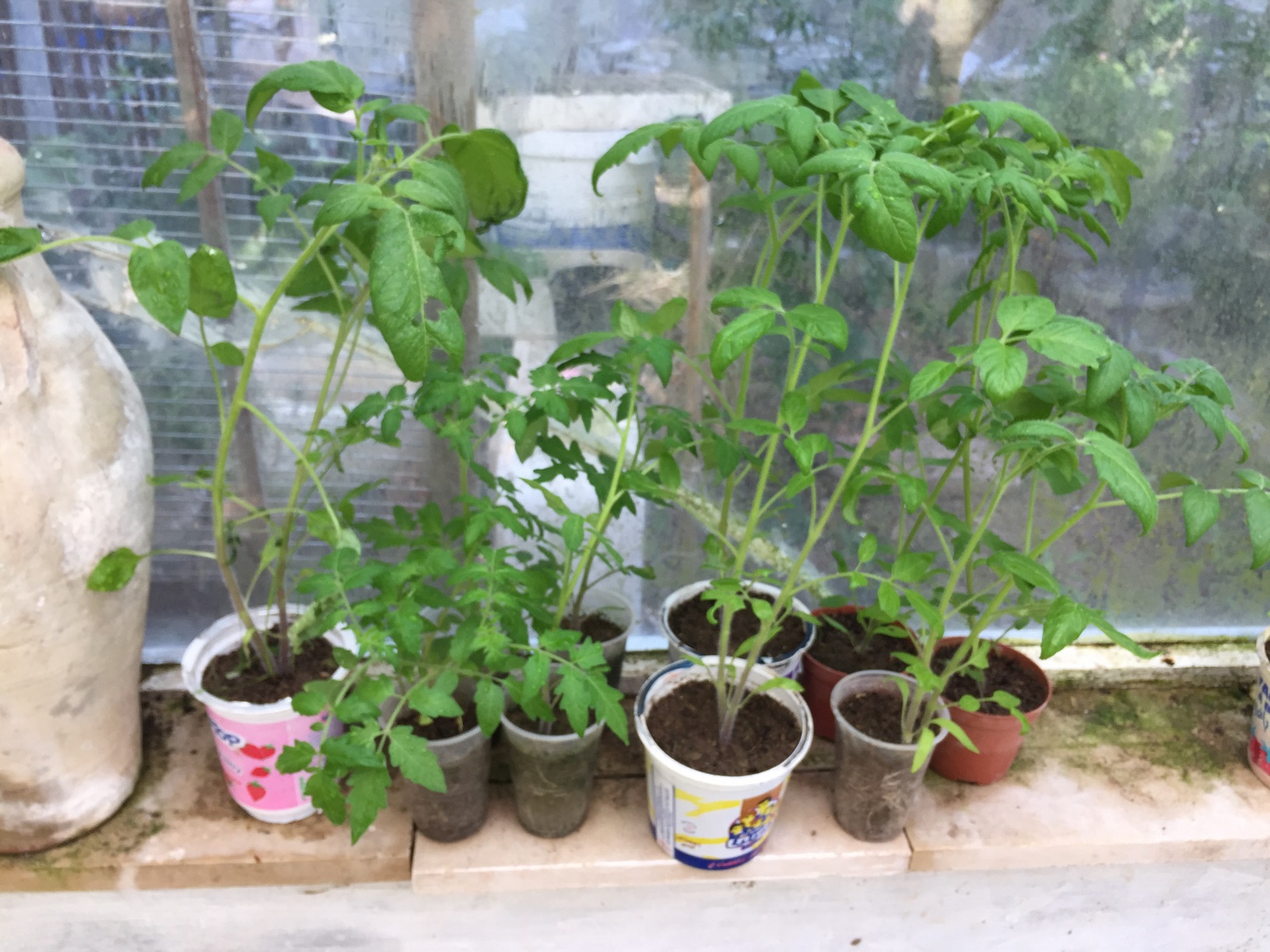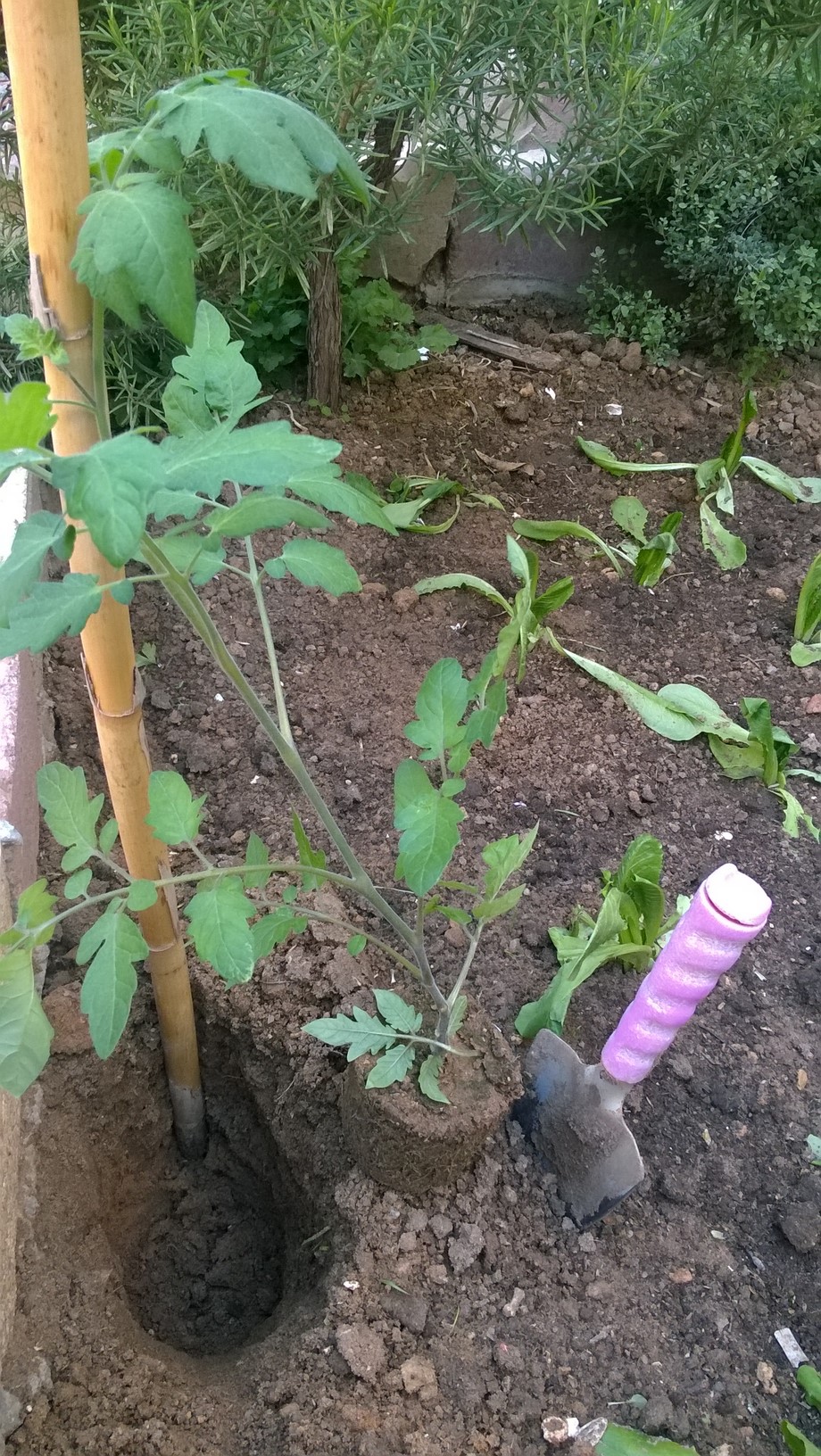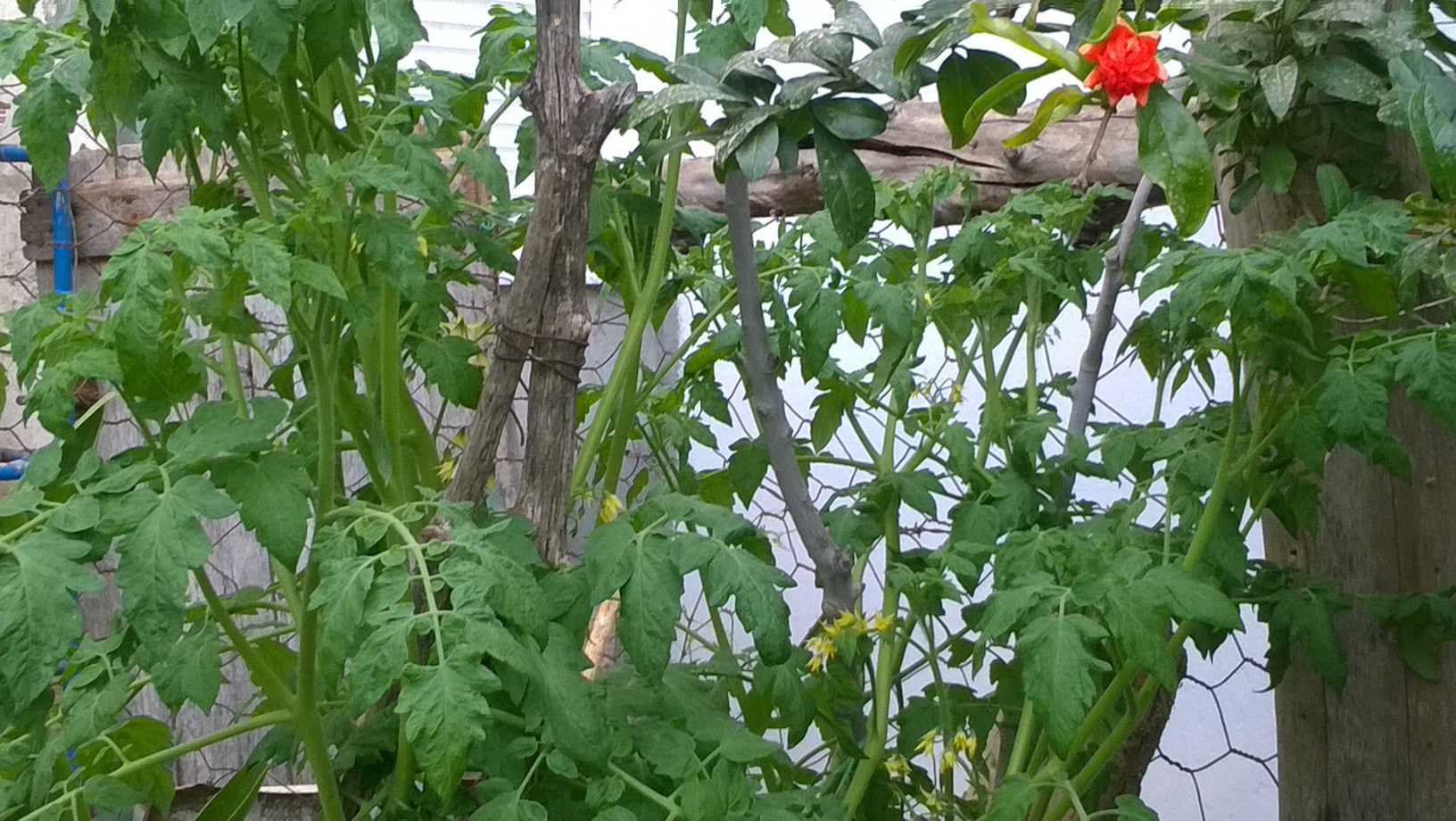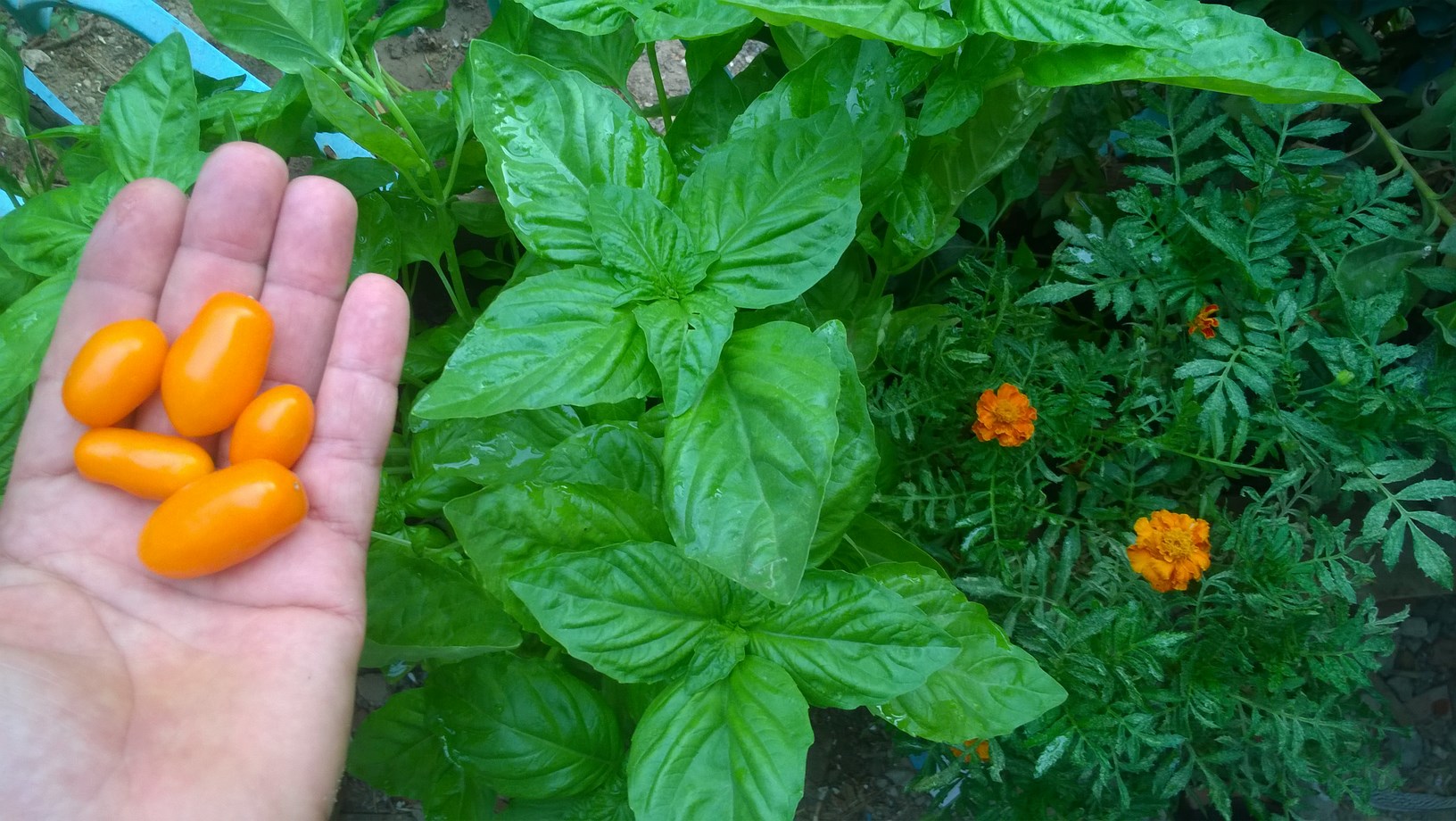Watch How to Harden off Tomato Seedlings Video
Planting Tomato Plants
Soil is a main factor in planting nearly all types of tomatoes. Here are some tips for preparing soil and produce healthy organic tomatoes.- Test the soil's acidity. You should check the pH level in your garden every three to five years. You can test it with an inexpensive kit from a garden center. Tomatoes like their soil pH around 6.0 to 6.8. If your soil pH is too low (too acid), you'll need to add lime to the soil to bring the pH back into the proper range.
- When you’re growing tomatoes, the deeper their root systems. The more nutrients they can pull from the soil, larger, more vigorous and more resilient your tomato plants will be. Before transplanting tomatoes, it's a good idea to work the soil until it's loose to a depth of six to eight inches. You can do the work with a garden fork. The tomato roots will be able to expand quickly in the loose earth and you'll also uproot and kill many weeds.
- Tomatoes grow well in moderately fertile soil with lots of organic matter. You can incorporate compost when you prepare the soil. No matter what kind of soil you have in your garden, you can shape it into a great home for your tomatoes. Both light, sandy soils that drain too rapidly and heavy, clay soils that take forever to drain and warm up in spring can be improved with the addition of organic matter such leaves or compost.
- Assuming you have provided rich well-drained soil, pick a sunny spot and don’t plant your tomatoes too close together. Tomato plants thrive in full sun and are healthier when provided good air circulation. Pick a location that gets at least 6 hours of sunlight each day to plant your plants. Till the soil with a hand shovel and mix in some manure, fertilizer, or compost. Dig holes deep enough to accommodate your transplants. Carefully remove the plant by holding it at the base, turning it upside down, and sliding off the pot.
- Set the plant in the hole deeply enough so that two-thirds of it is buried. Roots will sprout all along the buried stem to make a stronger plant. You can pinch off the lower leaves if you prefer, but it is not necessary. Tomatoes have the ability to grow roots along their stems, so when planting tomato plants, plant deep; right up to the first set of leaves. This takes care of those leggy tomato seedlings. If the plant is too long and wobbly, dig a small trench and lay the plant on its side, gently bending it into a right angle. Bury the stem in this position leaving those first two leaves exposed. Some gardeners believe those leggy starters will form a healthier plant than those with a more compact form.
After transplanting your seedlings into the garden, water well aroud your new plants. For the first 2 weeks after planting, water a little bit every day or every other day if it doesn’t rain, to get the plants established.
- Stake or cage all tomatoes with the exception of small bush or patio varieties, which can often support themselves. Waiting a few weeks after planting to install stakes or cages can injure the plant's roots. Cages and stakes keep tomatoes off the ground, helping to encourage successful tomato growing and prevent fruit rot and numerous diseases. I use bamboo stakes as they keep the plants stand tall and help tomatoes successfully grow. They need to be at least 8 feet high and 1 inch wide. Pound the stake at least 12 inches into the ground and 4 inches from the plant. Attach the stem to the stake with garden twine.
- After the tomatoes have been in the ground for 3 weeks, when the vines are thickening up and beginning to grow aggressively, stop watering. Let them dry out for a few days. At this stage, you want to make your tomatoes work to sink their roots deeper to find water. If it’s hot and they are wilting, give them some water. The point is to make them stretch, not stress them excessively. After a few days, give them a good, deep soaking. Saturate the soil, then let it dry out again for a few days, to make your tomatoes stretch their roots even deeper into the soil. The deeper their root systems, the more nutrients they can pull from the soil and you will have robust tomatoes plants put off garden pests, that resist diseases and healthy. Once your tomatoes start flowering and setting fruit, shift to regular watering, a little bit every day or every other day, for 1-1 ½” (2-4cm) of water per week. Flowering plants require a higher ratio of potassium. To ensure proper tomato plant nutrition, you will need to add nutrients at differing amounts at various stages of growth.
- Plant companion plants next to your tomato plants that will naturally deter bugs from residing on or near your beloved fruit. Plant , basil, beans, , borage, chives, garlic, mint, marigolds, anise, nasturtium, onion, parsley, peppers or petunias near your tomatoes to ward off unwanted visitors.
Care for Tomato Plants
- After the soil has warmed, mulch plants with a layer of organic mulch, such as straw or finely shredded wood chips, to prevent weeds and to maintain soil moisture. Mulch is also necessary to help successfully grow tomatoes as it prevents soil and soilborne diseases from splashing onto leaves when it rains.
- Water about once a week in the morning and do not water at night, as this creates dangerous conditions for your plants as insects love wet dark environments and rot and other diseases such as mold, verticillium rot, they are easily avoided by watering during the morning. Tomatoes grow most successfully when they have consistent moisture. If it rains less than 1 inch per week, supplement by watering. To prevent diseases, avoid wetting the foliage. Use a watering can or deliver water directly to the root zones by using a drip irrigation system. Remember that Your tomato plants can withstand both insects and fungal or bacterial disease better if they're watered regularly.
Pruning Tomato Plants
Should i prune my tomatoes or not? The frequent question and debate in the tomato growing world.
Let me tell you? You can do both!
You can choose to either heavily prune, minimally prune, or not prune your tomatoes at all. The decision to prune or not is personal, depending on how much effort you care to invest, the type of tomato grown, and how you plan to support it. If you like, you can remove side “sucker” branches from your tomatoes. A sucker is a new branch that sprouts up in the crotch between an existing leafy branch and the main tomato stem. A small sucker will not have little flower buds. Those are immature fruit branches. Pruning suckers reduces overall yield, but can increase fruit quality, and if allowed to grow, these sucker branches will eventually produce fruit. By pruning away the suckers, you do get fewer fruit from one plant. But your tomatoes produced will be larger, juicier, and superior in flavor. This could be especially helpful if you’re growing big, beautiful heirloom tomatoes that need a lot of energy to ripen.
Watch Know How To Prune Tomato Plants For A Lots Of Fruits Not Leaves Video
Pruning makes tomato plants more manageable and compact. That means you can usually space the plants closer together, but need to plan on training them upward. If you’re excited to grow several varieties in a limited amount of space, heavy pruning and training can make it possible.
Tomato Pests
Hornworms: They are so big (three inches long or more ) it's easy to control them just by picking them off. The problem is that their pale green color provides excellent camouflage, and the nymph and larval stages are far smaller and less obvious. If there are only a few, picking them off works well. To keep hornworms away from your plants, plant borage among your tomato plants.
Whiteflies: These tiny flying insects feed on plant juices, leaving behind a sticky residue which can become a host for sooty mold. To deal with release natural predators such as ladybugs, lacewings, but if the situation is out of control, use insecticidal soaps or botanical insecticides.
Tomato Diseases
Early blight: develops in early summer and causes leaves near the ground to develop dry, brown patches surrounded by concentric black rings. The best intervention is to prune off all affected leaves as soon as the problem is noticed. Pruning leaves to 18 inches from the ground will also reduce outbreaks.
Late blight: may strike following a prolonged period of heavy cool rain. Affected leaves develop light brown, water-soaked patches, and entire plants can wilt within a few days. To reduce the risk of late blight, provide excellent light penetration and air circulation to keep plants dry.
How To Protect Your Tomatoes
Healthy plants are much more likely to resist diseases and other problems so give your plants good soil, fertilizer, regular watering, avoid watering the foliage of your plants, especially in humid climates, as many diseases are encouraged by damp conditions and rotate crops so that soil-borne pathogens never have more than a season to get established.
Successfully Harvest Tomatoes
Harvesting tomatoes at the right time means you get fantastic flavor. Fully-ripened fruit tastes much better than fruit picked early.
- You’ll start picking your tomatoes about 60-85 days after planting seedlings in the garden.
Determinate tomatoes set and ripen their fruit all at one time.
Indeterminate tomatoes ripen all season long. You can help them to set fruit earlier by pinching off the tips of the main stems in early summer.
- Grasp the fruit firmly, but gently, and pull from the plant by holding the stem with one hand and the fruit with the other, breaking the stalk just above the calyx that has formed to protect the bud.
For the healthiest plants with the best yield, plant deep, water well, and stake the vines as they grow.
Watch Planting Tomato Seedlings Video
Home-grown tomatoes are a source of pride, a thing of beauty, and beyond-description delicious!
Happy gardening!
This web site is a participant in the Amazon Services LLC Associates Program, an affiliate advertising program designed to provide a means for sites to earn advertising fees by advertising and linking to amazon. Some of the links to products on this site are affiliate links. These are products that I've used or recommend based from homesteading experience. I do make a small commission (at no extra cost to you) from these sales.(alert-warning)
(full-width)



